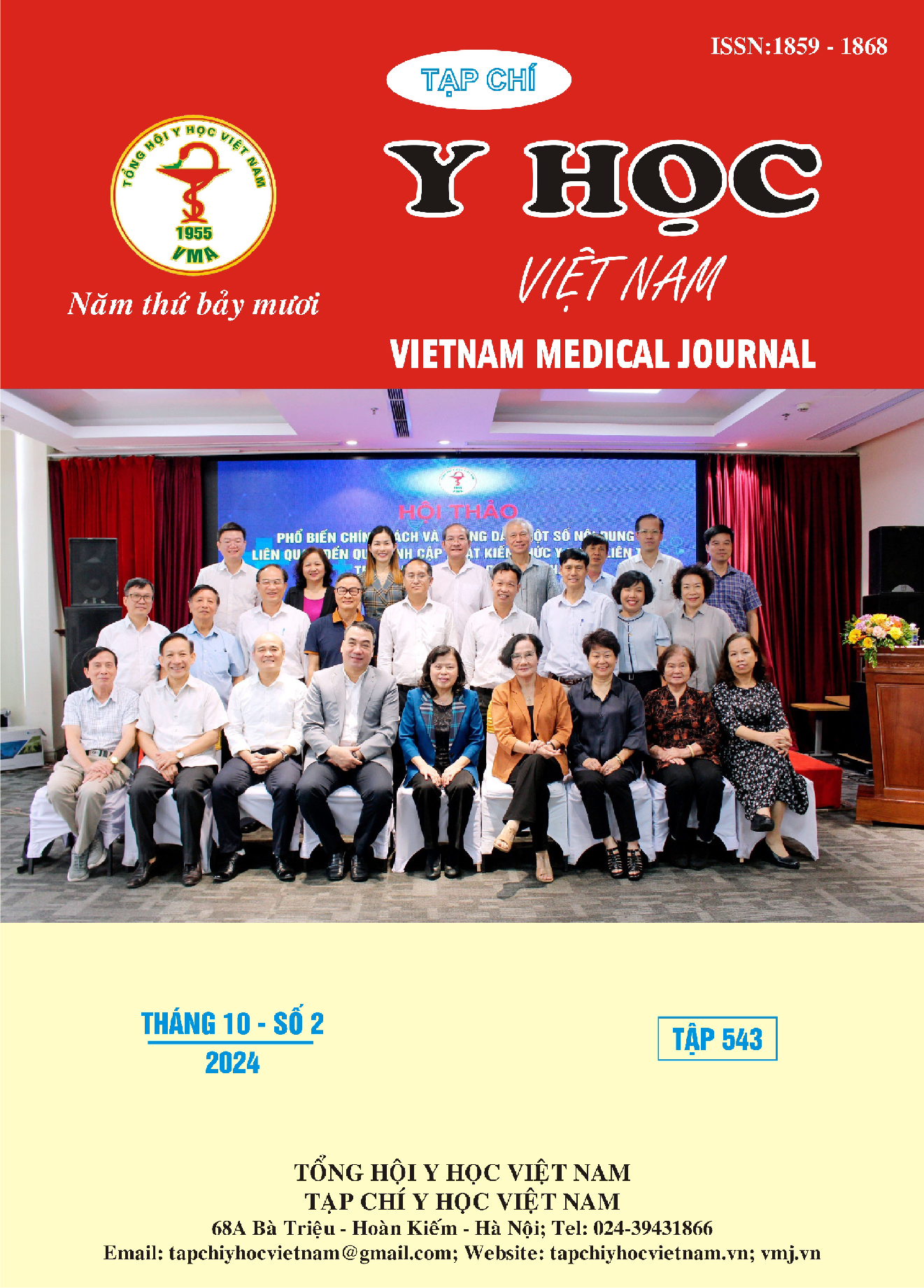EVALUATION OF THE BLOOD SUPPLY TO JUVENILE NASOPHARYNGEAL ANGIOFIBROMA USING DIGITAL SUBTRACTION ANGIOGRAPHY (DSA) AND ITS CORRELATION WITH TUMOR STAGES ON CT SCAN
Main Article Content
Abstract
Objectives: To evaluate the blood supply to juvenile nasopharyngeal angiofibroma using digital subtraction angiography (DSA) and its correlation with tumor stages on CT scan. Patients and methods: A descriptive study was conducted on 30 male patients at the Ho Chi Minh City Ear, Nose, and Throat Hospital from July 2019 to July 2024. Results: The tumors were classified according to the UPMC staging system, with stage I accounting for the highest proportion (40%). Eight tumor-feeding arterial branches were identified, with the ipsilateral maxillary artery being the primary blood supplier, providing blood to all cases and serving as the sole blood source in 50% of stage I patients. Additionally, 33.3% of patients had tumors supplied by bilateral arterial systems, and 16.7% of tumors received blood from the internal carotid artery, primarily in stages IV and V. The involvement of the internal carotid artery in advanced stages was statistically significant (p < 0.001). Conclusion: The ipsilateral maxillary artery is the main blood supplier for early-stage tumors, whereas the internal carotid artery plays a significantly more important role as the tumor progresses to advanced stages.
Article Details
Keywords
Juvenile nasopharyngeal angiofibroma, digital subtraction angiography, UPMC classification, preoperative embolization, maxillary artery, internal carotid artery.
References
2. Lopez F, Triantafyllou A, Snyderman CH, et al. Nasal juvenile angiofibroma: Current perspectives with emphasis on management. Head Neck. 2017;39(5):1033-1045. doi:10.1002/hed.24696
3. Anton Valavanis G. Baltsavias. Embolization of Juvenile Angiofibromas. In: Juvenile Angiofibroma. Vol 1. 1st ed. 1. Springer Cham; : 99-118.
4. Snyderman CH, Pant H, Carrau RL, Gardner P. A new endoscopic staging system for angiofibromas. Arch Otolaryngol Head Neck Surg. 2010;136(6):588-594. doi:10.1001/archoto.2010.83
5. Mehan R, Rupa V, Lukka VK, Ahmed M, Moses V, Shyam Kumar NK. Association between vascular supply, stage and tumour size of juvenile nasopharyngeal angiofibroma. Eur Arch Otorhinolaryngol. 2016;273(12):4295-4303. doi:10.1007/s00405-016-4136-9
6. Nicolai P, Berlucchi M, Tomenzoli D, et al. Endoscopic surgery for juvenile angiofibroma: when and how. Laryngoscope. 2003;113(5):775-782. doi:10.1097/00005537-200305000-00003
7. Ballah D, Rabinowitz D, Vossough A, et al. Preoperative angiography and external carotid artery embolization of juvenile nasopharyngeal angiofibromas in a tertiary referral paediatric centre. Clin Radiol. 2013;68(11):1097-1106. doi:10.1016/j.crad.2013.05.092
8. Wu AW, Mowry SE, Vinuela F, Abemayor E, Wang MB. Bilateral vascular supply in juvenile nasopharyngeal angiofibromas. Laryngoscope. 2011;121(3):639-643. doi:10.1002/lary.21337


